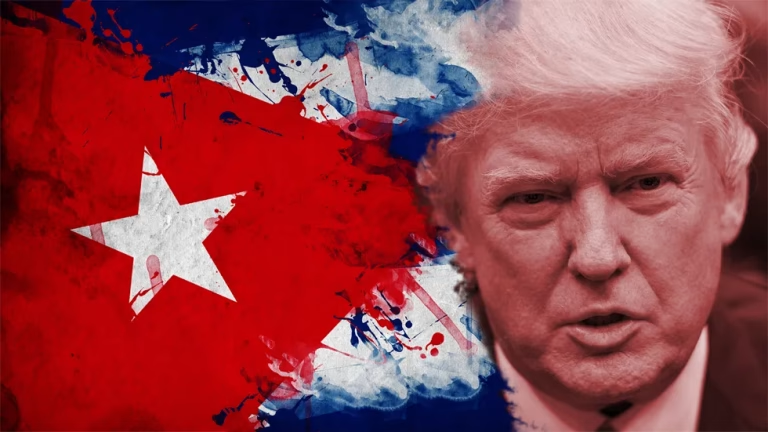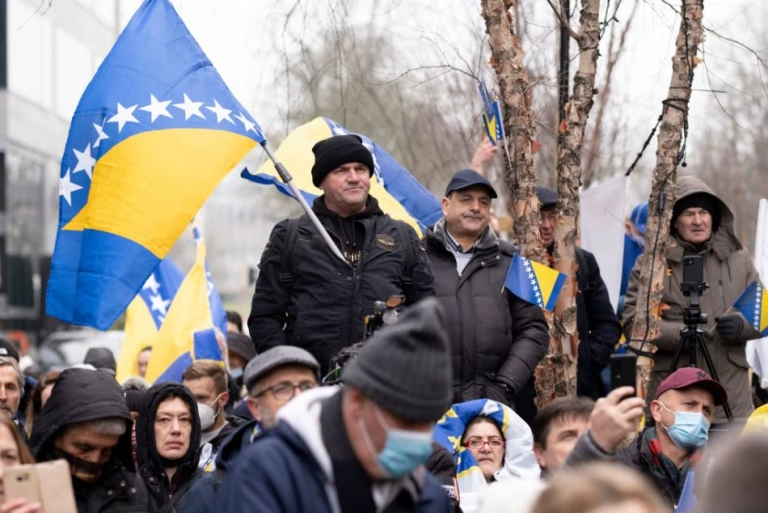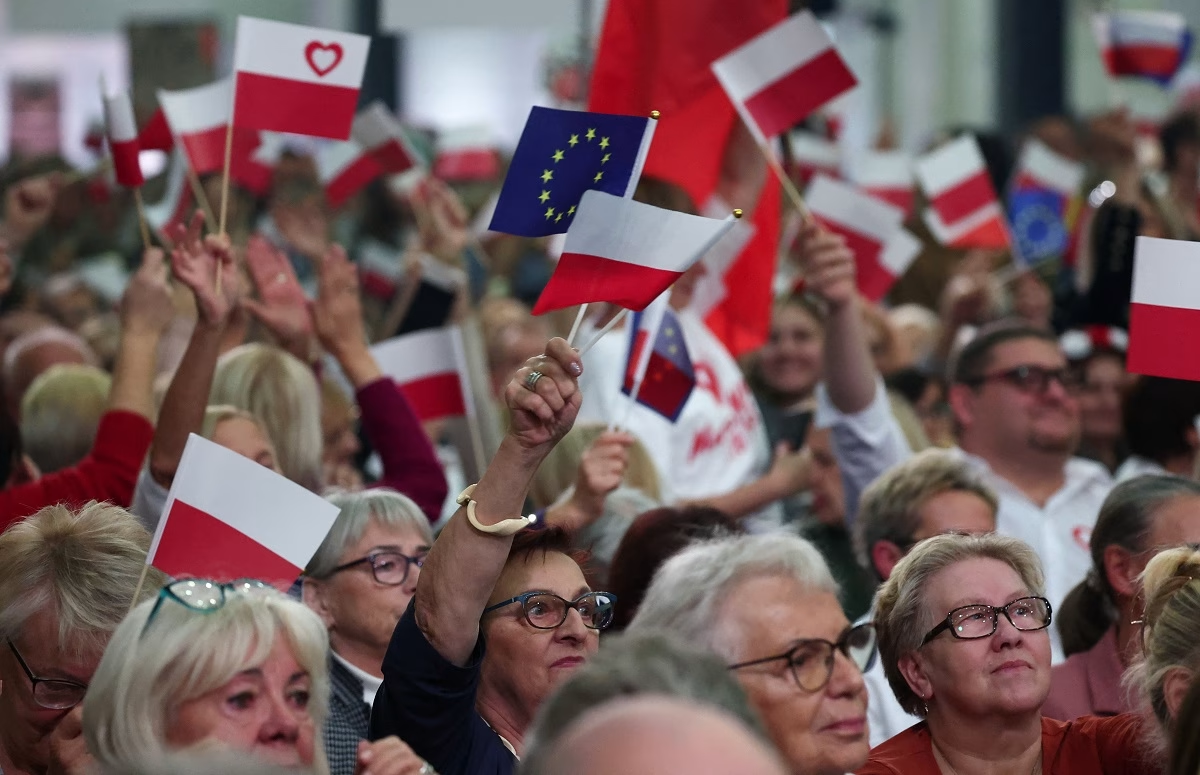
The political struggle between right-wing Trumpists and pro-European liberals continues in Poland
Poland has entered a period of latent political regrouping. After the presidential victory of the right-wing and the weak reaction of the liberals, the centre of gravity of power has shifted. The PiS party is consolidating influence and radicalising its agenda, while building ties with the Trump administration. The collapse of the unity of the ruling coalition is becoming a real risk, especially against the backdrop of growing pressure on the PSL.
Polish democracy’s tic-tac-toe crosses
After the liberal Civic Platform was defeated in the June 1 presidential election, it did not give up, and supporters of Rafał Trzaskowski spread messages on social media that they believe Poland’s presidential election was rigged in favour of the right-wing Karol Nowrocki, and they found 500,000 fraudulent votes, more than the difference between the candidates.
They analysed data from all election commissions, found anomalies in the distribution of votes in the first and second rounds, looked at the composition of election commissions, and talked to members of election commissions. There were cases of ignoring complaints, external contacts of election commission members, attempts to cancel ballots for Trzaskowski and even substitution of results. Absurd accusations of a ‘Russian trace’ also appeared, although it is Law and Justice (PiS) that has always taken an anti-Russian stance. Trzaskowski’s supporters called for mass complaints and a recount under the supervision of the Supreme Court, even though the Liberals themselves used similar methods, but less effectively.
The Supreme Court, represented by its head Krzysztof Wiak, reminded: Polish law does not provide for a nationwide recount – only the inspection of specific polling stations with confirmed irregularities is possible. Complaints without facts have no legal force, and even recognised errors cannot affect the result when there is a gap of hundreds of thousands of votes. Judicial practice confirms that private violations do not invalidate the election results. Therefore, the results of the 2025 campaign will remain in force, and the right and left will have to co-exist with each other in the current status quo in the near future.
After Trzaskowski’s defeat in the 2025 presidential election, the main risk to the status quo is not recounts but a possible split in the ruling coalition. The Polish Peasant Party (PSL), led by Defence Minister Władysław Kosiniak-Kamysz, remains the weak link. While a breakup is unlikely before the end of 2025, the PSL is probably already in informal consultations with PiS about a possible alliance before the 2026-2027 elections.

Tusk is aware of the risk and initiated the vote of confidence in the Sejm as a signal to the PSL, as leftists and Golovni supporters are not seen as potential allies by PiS. The rumours that appeared in the media about PSL’s negotiations with PiS were in fact a tool of pressure. Tusk may have tried to strengthen Kosiniak-Kamysz’s loyalty by offering him additional resources in the MoD. Nevertheless, Kosiniak-Kamysz maintains a wait-and-see attitude. His possible transition depends on the rising ratings of the PiS, the Confederacy and the CPC, as well as active support from the Trump administration – political, informational and financial. An additional factor could be the influence of the US military-industrial complex, with which the minister has close ties. But real changes are not possible until 2026 at the earliest – until the PiS guarantees him a more favourable position than the current one.
Agrarian issue splits Warsaw and Brussels
In order to strengthen their positions, PiS and Civic Platform are increasingly playing populism. In early June, with the approval of both parties, Poland adopted the European Commission’s decision, which it had lobbied for, to return to the rules for imports from Ukraine under the EU-Ukraine Association Agreement, which was in force from 2014 to 2022. At the same time, a new agreement on favourable supplies should be signed between the EU leadership and Kiev in 2025, which should be subsequently approved by the governments of all EU countries, including Poland. But the Polish establishment opposes favourable conditions for the supply of goods from Ukraine and will sabotage the new agreement both at the EU and Polish levels. In Poland, as in other countries, the volumes of tariff quotas applied from 6 June this year until the end of 2025 will now be set at 7/12 of the annual volumes stipulated in the Agreement.
Because of this, the final reduction of quotas for different types of goods compared to the conditions that were in force from 2022 to 6 June 2025 will be from 2 to 10 times for different types of nomenclature of goods. At the same time, the EU leadership is going to introduce new unilateral measures to liberalise customs duties on imports of Ukrainian products (ATM) and negotiations on this issue with the Ukrainian authorities were launched in winter 2025. However, due to the fatigue of EU officials, business and the public with these benefits, even in the case of successful negotiations, we should expect quotas to be reduced by 2-4 times, which will affect primarily agricultural products such as eggs, sugar and cereals.
Also, the terms of negotiations may be extended, and in the optimistic version the new agreement will be adopted in September and in the pessimistic version in December 2025, as during this period the EU authorities will have to either adopt a new agreement or extend the current conditions for 2026. However, even if new quotas are approved at the EU level, the Polish leadership will delay the adoption of these measures at the national level, and this will be done by both the opposition and the Tusk government. As a PiS representative, Nawrocki has traditionally held the view that Polish-Ukrainian relations should be based on the principles of partnership, with no trade benefits for Ukrainians that harm Polish farmers and the Polish state, and as president he will put up any possible barriers to new EU trade rules to show his patriotism and ensure populism before the 2027 elections.
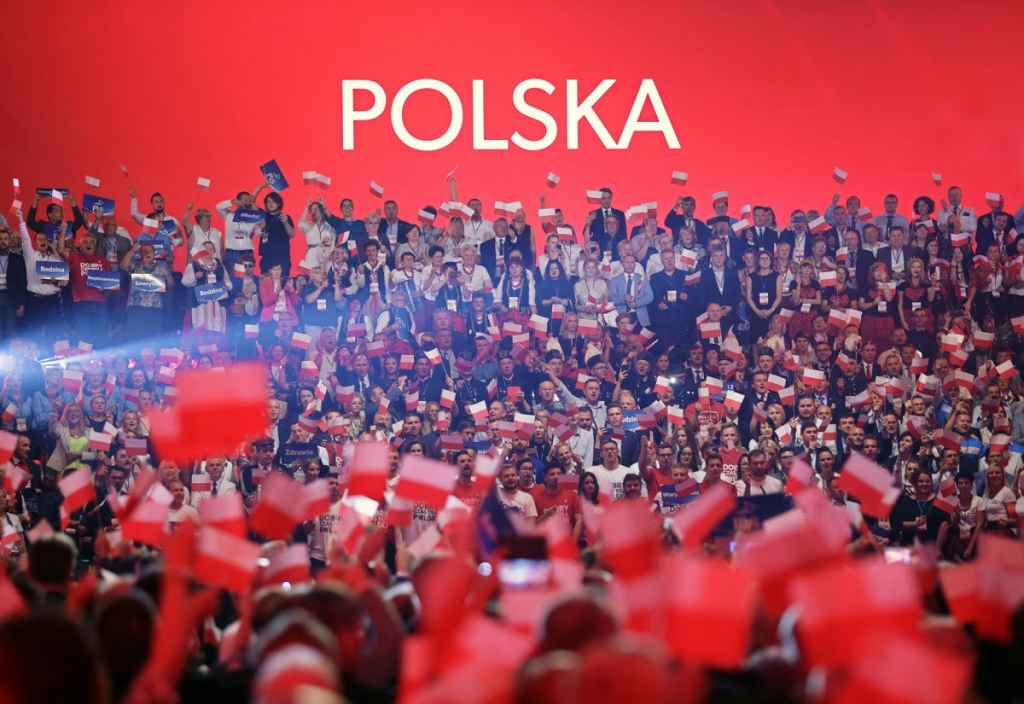
At the same time, Tusk promised during the 2025 presidential election campaign to lobby for the EU’s withdrawal from ATM and to push for stricter quotas for Poland. In case of Trzaskowski’s victory, it was planned to soften these demands, but due to Navrotski’s victory, Civic Platform will have to compete with PiS for voters, among whom the preservation of favourable conditions for the supply of Ukrainian goods is a toxic topic even in a very liberal environment.
PiS takes the course to the far-right
In this light, the results of the seventh congress of the Law and Justice Party in Przysucha, Poland, were telling, and after the triumph of Jaroslaw Kaczyński’s nominee Karol Nawrocki in the Polish presidential election, the latter expectedly retained the post of party president and strengthened his apparatus position, which was unstable until 2025. At the same time, changes in the composition of the party’s vice-presidents indicate an attempt to attract US political support, a shift to a more far-right, uncompromising line, and Kaczyński’s increased control over the party’s political council by relying on people personally loyal to him.
Kaczyński ‘s former nominees, such as party general secretary Piotr Milowański and party treasurer Henryk Kowalczyk, retained their posts. At the same time, former Minister of Justice Zbigniew Ziobro, a Kaczyński loyalist who had been collecting dirt on PiS political opponents, was added to the vice-presidency. In addition to strengthening Kaczyński’s position in the intra-party structure, this appointment indicates that in the 2027 parliamentary elections the PiS will bet on an alliance and, at the same time, informal pressure on the Confederation and the Confederation of the Polish Crown (KPK) in order to obtain the most favourable conditions for the formation of the ruling coalition in the Sejm and to maintain and strengthen indirect control over the actions of these political forces. In addition to Ziobro, the vice-presidents included Przemyslaw Czarniak, who, despite his difficult relations with Kaczyński, enjoys great prestige among functionaries of Donald Trump’s foreign policy team and is needed to strengthen relations with the US administration.
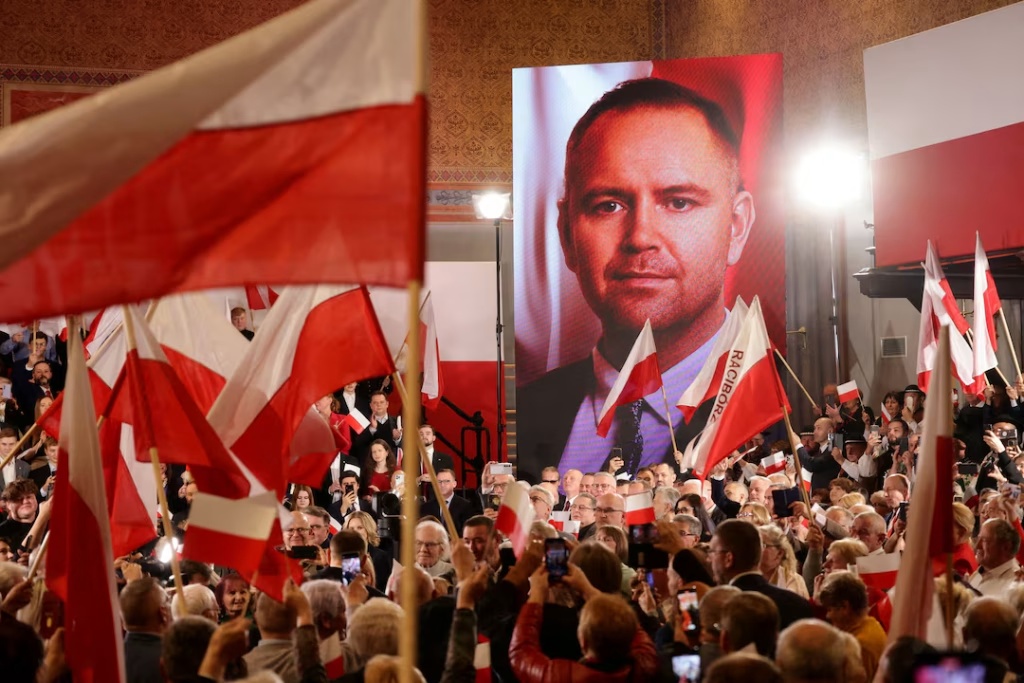
Sejm deputy Anna Krupka, known for her anti-Semitic views, became vice-president of PiS. The move reflects the party’s course towards more traditional right-wing positions, previously softened in 2015-2024, which, according to the leadership, weakened support for PiS and strengthened the positions of the ‘Confederation’ and the CPC. Also appointed as vice-president is MEP Tobiasz Bochenski, the PiS candidate in the 2024 Warsaw mayoral election, where he lost to Trzaskowski. Against the backdrop of the latter’s declining popularity, especially in the capital, PiS is preparing to compete for the post of Warsaw mayor, with Kaczynski reinforcing Bochenski ‘s status as a future candidate.
In doing so, Kaczyński has not eliminated his internal opponents, who were counting on his departure in the spring of 2025 in the event of a PiS defeat. Mateusz Morawiecki, Beata Szydło and Patryk Jaki retained their vice-presidential posts, demonstrating their loyalty to the leader. At the same time, the former president Andrzej Duda, who staked on the intra-party split, remained out of the leadership – his political role in PiS is virtually finished. If this status quo is maintained, this balance of power within the PiS should continue until the Sejm and Senate elections in 2027.
In the meantime, the political struggle between right-wing Trumpists and pro-European liberals in the PJS will continue until the Seimas and Senate elections in 2027. For now, the political struggle between right-wing Trumpists and pro-European liberals in Poland continues to be one of the most interesting confrontations in today’s unstable Europe.
